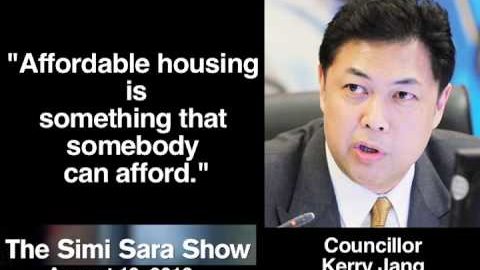
The Cult of Christine Boyle‘s OneCity Vancouver plans to transform your once quiet neighbourhood.
Do you like the quiet street you live on, just a hop, skip and a jump from your local neighbourhood park and community centre, surrounded by neighbours who’ve become friends, with produce stores and cafés just up the street?

Well, with the release on Tuesday of OneCity Vancouver’s disastrous housing plan you can kiss your neighbourhood good-bye, as OneCity released a campaign platform that would mandate the construction of six-storey purpose-built rental housing in every neighbourhood, on every block, anywhere and everywhere across the city — a massive gift to Vancouver’s greed-driven development industry — sans any consultation with citizens, that …
“… would remove any semblance of a voice for neighbourhoods in the development process,” TEAM … for a Livable Vancouver Mayoral candidate, Councillor Colleen Hardwick told the Vancouver Sun’s Dan Fumano, as she blasted OneCity Vancouver’s poorly thought-out housing platform.
“The idea of Vancouverites discovering a massive building has been approved next to their home with “no notice, no public hearing, no opportunity to be consulted,” Ms. Hardwick fumed, “would be a disaster — right across the city. Not only that, it shows contempt for citizens, renters and homeowners, not to mention the democratic process, and community engagement.”
One City’s release of their egregiously simple-minded, anti-democratic and disastrous housing platform is a thoughtless re-tread of a proposal originally made by Councillor Boyle to Vancouver City Council in May 2021, a wrong-headed plan then, and one that was rightfully and soundly rejected by her Council colleagues.

In 2021, Ms. Boyle presented her 12-storey housing motion as “building co-ops” in every neighbourhood; her colleagues pointed out during debate …
“The top 10 floors of the proposed ‘co-op’ building you advocate for in your motion constitute, in fact, market rentals, while the bottom two floors would be set aside at a still unaffordable 20% below the market rate. If these are “housing co-ops”, as you suggest, it would appear that you lack a fundamental understanding of what member-run housing co-ops are all about.”

Larry Benge, at the time the co-chair of the umbrella residents’ association that represents Vancouver’s 23 neighbourhoods — the Coalition of Vancouver Neighbourhoods — also weighed in on the controversy surrounding Councillor Boyle’s motion, stating “the loosening rules around social housing will drive up land values, resulting in gentrification and demovictions.”
“(Councillor Boyle’s motion) just throws the doors wide open for land speculation,” Benge told The Georgia Straight‘s Carlito Pablo in a May 19, 2021 interview, stating he found it to be “unbelievable” and the “height of naiveté” for anyone to think that simply because a development is “social housing” it will neither have any ability to set precedent, nor will affect land values.
In advance of the presentation of Ms. Boyle’s motion, the Coalition of Vancouver Neighbourhoods posted a statement online opposing the motion.
“This will increase development pressure, increase rental inflation, gentrification, demovictions, and displacements for existing older, more affordable rental buildings,” the Coalition wrote, noting existing rents in older buildings “tend to be much lower than new rentals, sometimes even lower than typical subsidized social housing rents, while existing older units are also generally larger.”

Illustration showing what a Vancouver side street could look like if OneCity’s proposed housing policy was to be implemented, allowing six-storey apartment buildings in all Vancouver residential neighbourhoods (ie … your neighbourhood). Image by Matthew Thomson/Matthew Thomson Design. Photo: Bryn Davidson, Lanefab Design
Here we are in 2022, and Christine Boyle — and her OneCity Council candidate colleagues — are still promoting The Big Lie, the pipedream, that by invading and destroying neighbourhoods across the city with the rampant construction of unaffordable, developer-friendly (read: they’re gonna make billions!) 16-storey apartment buildings, somehow Vancouver’s citizens will be better off, the unhoused and under-housed will have a roof over their heads, and comfort within Vancouver’s neighbourhoods, on every block across our city.
Poppycock. Hogwash. Balderdash — not to mention, a cruel provocation meant to cause harm to Vancouver citizens desperately in need of housing.

No opportunity for the public to be heard; no public consultation at local community centres; no input from the Vancouver Planning Commission, nor Vancouver’s Development Permit Board; no input from Vancouver’s Planning, Urban Design and Development Services Department; no hearings before City Council to adjudicate the proposed projects — just a rubber stamp of whatever the developer wants to build, on any block, in any neighbourhood, employing any building material, cladding and presentation to the street, all while ignoring every single aspect of the carefully considered, widely consulted, in-person engagements with citizens, agreed upon community plans for each of Vancouver 23 neighbourhoods … totally and utterly cast aside by The Cult of Christine Boyle’s OneCity Vancouver authoritarian housing plan, for developers.
















